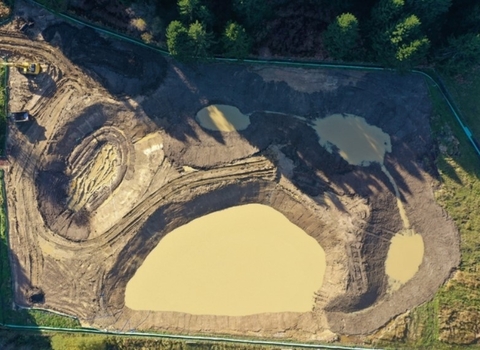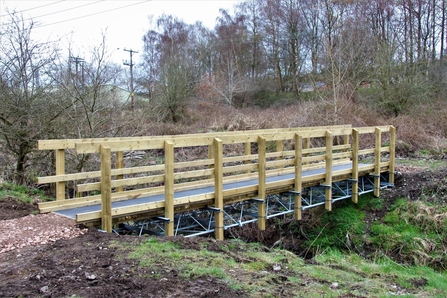This work will allow the local community of Cinderford greater access to nature, while creating and improving habitats for some of the rare species that are found here and improving fish passage for iconic species.
The Cinderford Brook is of special significance, directly joining the Severn Estuary whilst playing a vital role in supporting a host of fish species who use it for spawning. These species include the Atlantic salmon, sea trout, sea lamprey, river lamprey and European eel.
Ruspridge Halt is one of only two small pearl-bordered fritillary butterfly colonies in the Forest of Dean, and the Wild Towns Project will build upon the work carried out by Foresters' Forest and Forestry England to support these butterflies, in the hope that their numbers will increase and ensure that this species isn’t lost from the Forest of Dean.
Our fundamental aim is improving the connectivity for all fish species across the four structures and hope to improve the surrounding habitat. We hope better connectivity will bring greater biodiversity with it, creating a thriving environment which engages the local community.
Gloucestershire Wildlife Trust is working with the local landowners, Forestry England, Forest of Dean District Council and Severn Trent Water to deliver this work.

Crumpmeadow wetland
Thanks to our project partner, Severn Trent Water, the main stages of creating the wetland at Crumpmeadow at Ruspidge Halt in Cinderford have been completed.
Five ponds of varying sizes have been created, which all interlink to create much needed wetland habitat in the Cinderford Brook catchment.
The final stages will be to plant up the ponds in late spring with marginal and aquatic plants to create habitat perfect for a whole host of insects, amphibians and reptiles that are of conservation concern. We will also install bat roosting areas so that wetland-loving species such as Daubenton's bats and soprano pipistrelles can take advantage of the insect bonanza.

Ruspidge Halt bridge
To make access to Ruspidge Halt easier for people, connecting Valley Road to the Halt, a new footbridge was installed, replacing one that had to be removed some years ago. This took rather longer to install than was foreseen due to issues with contractors and Covid-19 slowing progress. However, thanks to Ecosulis Ltd, Derek Hancox Ltd and Forestry England, the bridge was completed and opened in March 2021.

The new bridge at Ruspidge Halt
Exmoor ponies at Awres Glow
We were pleased to announce in autumn 2020 say that six Exmoor ponies have been happily grazing away in the grazing compartments at Awres Glow.
They've been eating this year's growth of grasses and some of the fresher shoots of the scrub, plus trampling some of the bracken. This helps to create a mosaic in this open forest area by creating a greater diversity in vegetation type and structure.
They'll also provide further opportunities for ground-nesting birds such as nightjars, more basking locations for reptiles like adders and more feeding opportunities for finches and other small birds which use these open areas.
Find out more about conservation grazing in the Forest of Dean
Preparing for weir removal
In August 2020 to ensure fish populations aren't negatively impacted by the upcoming work, the fish were caught, measured and recorded before being released upstream or downstream while the work takes place.
The Cinderford Brook has been identified by the Environment Agency as a critical watercourse for declining salmon and eel populations. However, due to the presence of historic mills and mines within the river catchment, there are multiple weirs on the river which prevent fish passage upstream. Four of these weirs between Ruspridge and Lower Soudley pose a significant challenge to fish. The project will tackle these weirs by installing fish passes to allow the movement of fish upstream to their spawning grounds.
Watch the short video below to discover how our project partners, Severn Rivers Trust, carried out this surveying.
White-clawed crayfish monitoring
White-clawed crayfish are our only native crayfish in the UK, and they're becoming increasingly rare due to the introduction of an invasive species, the north American signal crayfish.
Find out how our project partners, Severn Rivers Trust, carry out a survey for these creatures and learn how to identify them in the short video below.
Finding a baseline
In summer of 2019, a Modular River Physical Survey (MoRPh) survey was carried out. This measures the physical features of a river, such as depth, width and turbulence, and creates a score of how valuable it is for wildlife.
Another MoRPh survey will be carried out when the project work is completed to monitor how successful it has been. The work will include the addition of features in the stream such as rocks and logs placed in a way to change how the water flows, which will help improve the brook for wildlife.
